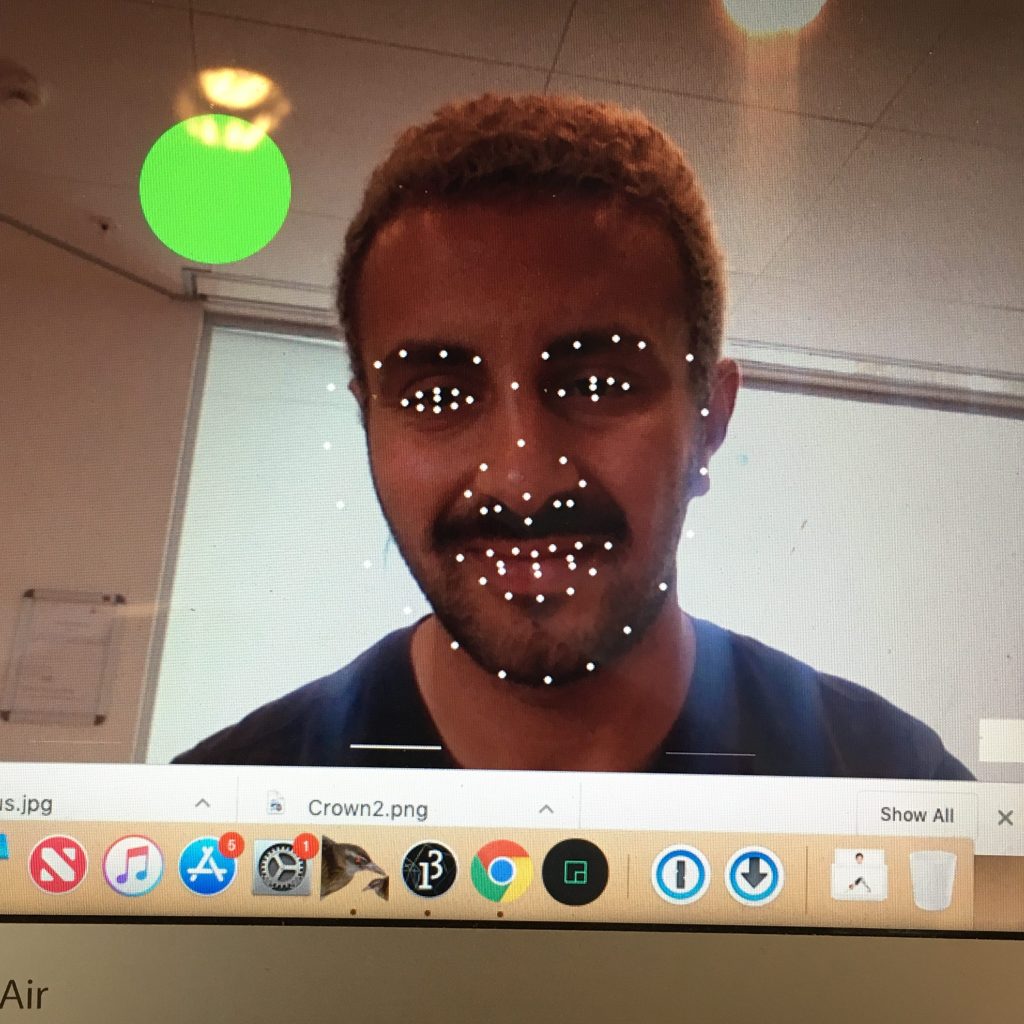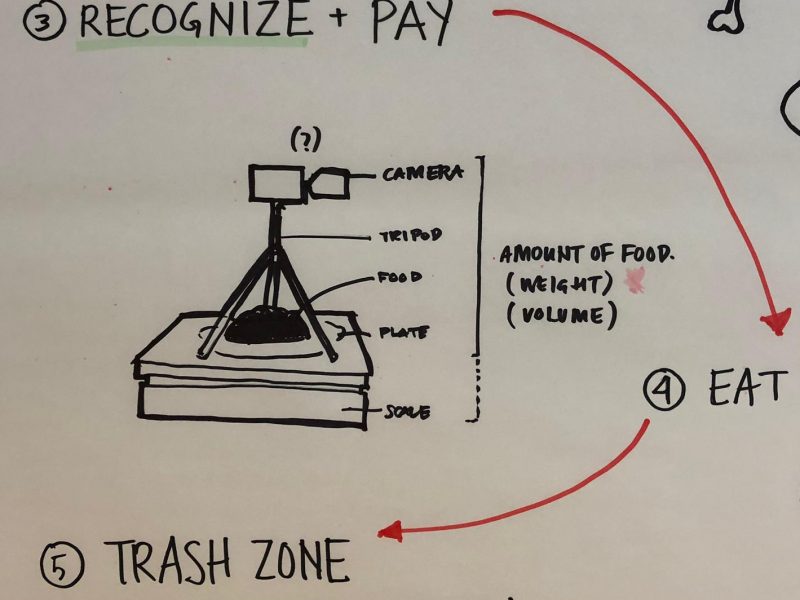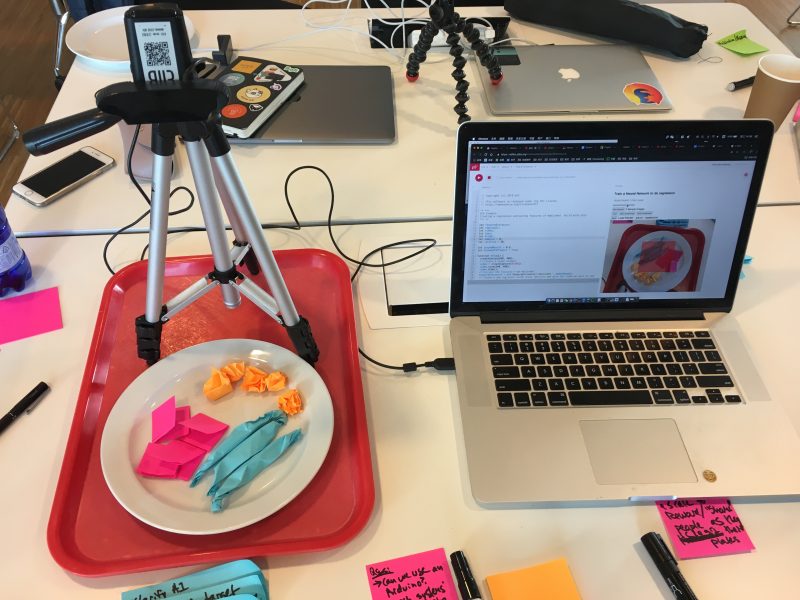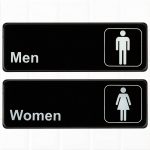Leveraging machine learning to
save the planet one plate at a time
Context
As part of the Copenhagen Institute of Interaction Design (CIID) Summer School program I learned the fundamentals of machine learning as well as several programs specifically aimed at creative industries, including Processing and Runway. With progressive understanding of the different ways in which machine learning could be applied, our class was split into groups and tasked with the following design brief:
Develop a working prototype that demonstrates an original idea building on the machine learning techniques explored in class.
With this in mind, we decided to integrate our assignment with the work of our fellow participants in the designing data course to gather as many inputs as possible and develop a robust prototype capable of demonstrating practical application of machine learning principles.
Role
The machine learning course offered a great opportunity to straddle the worlds of tech and design, as the concepts we imagined had to be programmable in order to be recognized by the model and result in a useful output. Despite not having a background in programming I was able to learn the underpinning processes quite quickly and design different ways to apply them to a practical scenario.
Based on the living laboratory offered by the UN building in Copenhagen, I designed and facilitated the prototyping process our team conducted in the UN cafeteria, as I strongly believe in the value of obtaining feedback from real users whenever possible. I then worked with my fellow group members to incorporate the results of our tests into our machine learning model, ultimately building a robust and practical way to raise awareness around food waste.

Process
Upon receiving the design brief, our team sought to design a machine learning model with practical applications that could be prototyped within the United Nations (UN) City building. As the CIID Summer School is closely aligned with the UN’s Sustainable Development Goals, we considered how we might use our model to address one of the goals, ultimately deciding to address the issue of food security by raising awareness among cafeteria guests of the amount of food they are wasting.
As we considered how to approach the design of the model it quickly became apparent that we would have to consider human behavior in creating an interactive experience that would motivate individuals to change their behaviors. From the workflow that would guide users through our process to the messaging used throughout, we recognized the need to encourage people to be conscious of their ability to reduce waste and motivate them to do better, rather than shame them with negative messaging. This was an important decision that would be tested and confirmed across the design of several iterations of our model.
In building the model we were able to observe the importance of properly training it with different inputs, as it becomes more robust and capable of properly identifying food waste with greater volume and diversity of examples. In practice this required photographing a dozen plates with various amounts of remaining food to train the model to recognize food waste.
Although our initial model included several prompts depending on the amount of food it detected on the plate, user testing revealed a desire for a simpler message, as people are generally conditioned to think of doing a good or bad job, rather than something more nuanced. As a result we updated the model to quickly toggle between the two and either offer them positive reinforcement or make them aware of the amount of food they had remaining and encourage them to do a better job next time.
By collaborating with team members from the Designing with Data course we were able to incorporate additional data inputs, including the weight and cost of food waste. Additional collaboration extended to data visualization and reporting to communicate the results in such a way as to motivate people to take action, including the introduction of competition and rewards.
In Action

Initial sketches of our prototype helped us visualize the data inputs available for our machine learning model and how we might track information throughout a cafeteria guest’s journey, including before and after they consumed their meal.

In order to test our machine learning model we began by using paper props to ensure the model could correctly identify the total volume of food waste and individual items. After several iterations we decided to use a discrete model rather than a continuous one in order to enable rapid feedback, as we observed that users had a very short window to participate in our pilot and wanted a quick response: had they done a good job or not?
By testing our prototype in a visible area of the UN City cafeteria we caught the attention of kitchen staff and management who were curious to see how our model could be used to help them track and reduce food waste. As a result, we developed a proposal to present data from our model on message boards within the cafeteria to indicate the cumulative volume and cost of wasted food to motivate users to be more mindful of their consumption and responsibility in reducing food waste.
Outcomes
After a dozen user tests, we determined that we could improve our machine learning model by including additional data inputs collected by fellow participants involved in a course on using data for system design. As a result, we were able to integrate sensor data to approximate the volume and cash value of food waste and use this information to further motivate individuals to reduce their waste.
By testing our prototype in a visible area within the UN cafeteria we were able to grab the attention of kitchen staff and management, many of whom were curious to see how our model could be used to help them track and reduce food waste. In our discussions with the UN kitchen management, we proposed linking our model to message boards within the cafeteria to indicate the cumulative value and cost of food waste to motivate users to be more mindful of how much food they’re purchasing and consuming. By making this information visible to the larger group, we can raise the collective awareness of cafeteria guests and encourage them to be more mindful about their ability to manage their consumption and reduce waste.
Another simple adjustment to our model would be to use the camera currently measuring the amount of food left on the plate to identify the type of food remaining. In doing so, we can advise the kitchen staff which foods are not being eaten, enabling them to adjust their menu in real-time. Such simple adjustments increase the model’s usability without increasing its complexity and therefore serve as a practical tool that can be leveraged by both users (cafeteria guests) and service providers (kitchen staff).
In our final presentation we discussed the process involved in building our machine learning model, protoyping with real users, and iterating to increase its functionality for cafeteria guests and UN City kitchen staff alike. We also discussed future additions to the model, including using image recognition to identify commonly wasted food to allow the kitchen to adjust their menu in real time.




